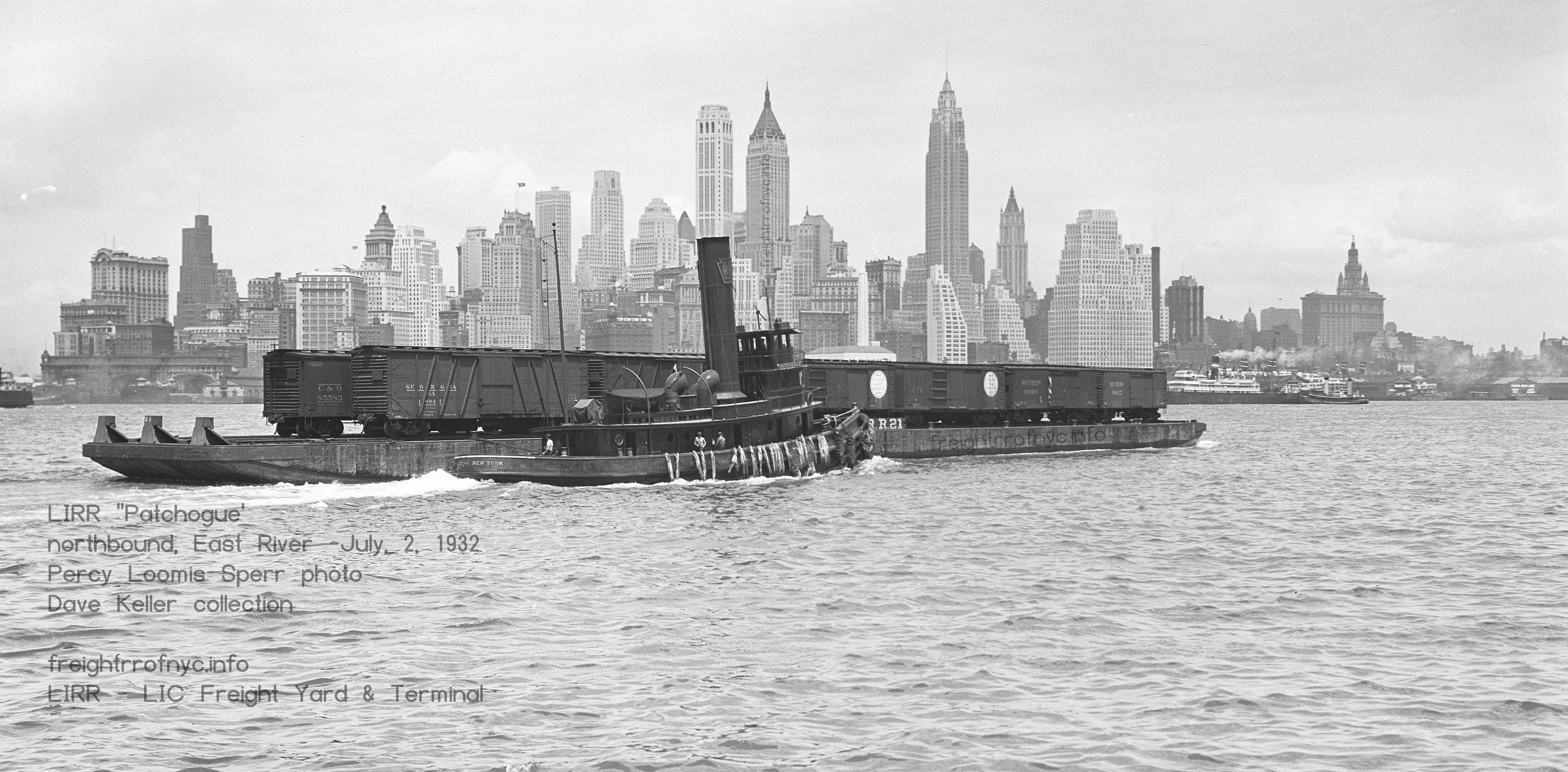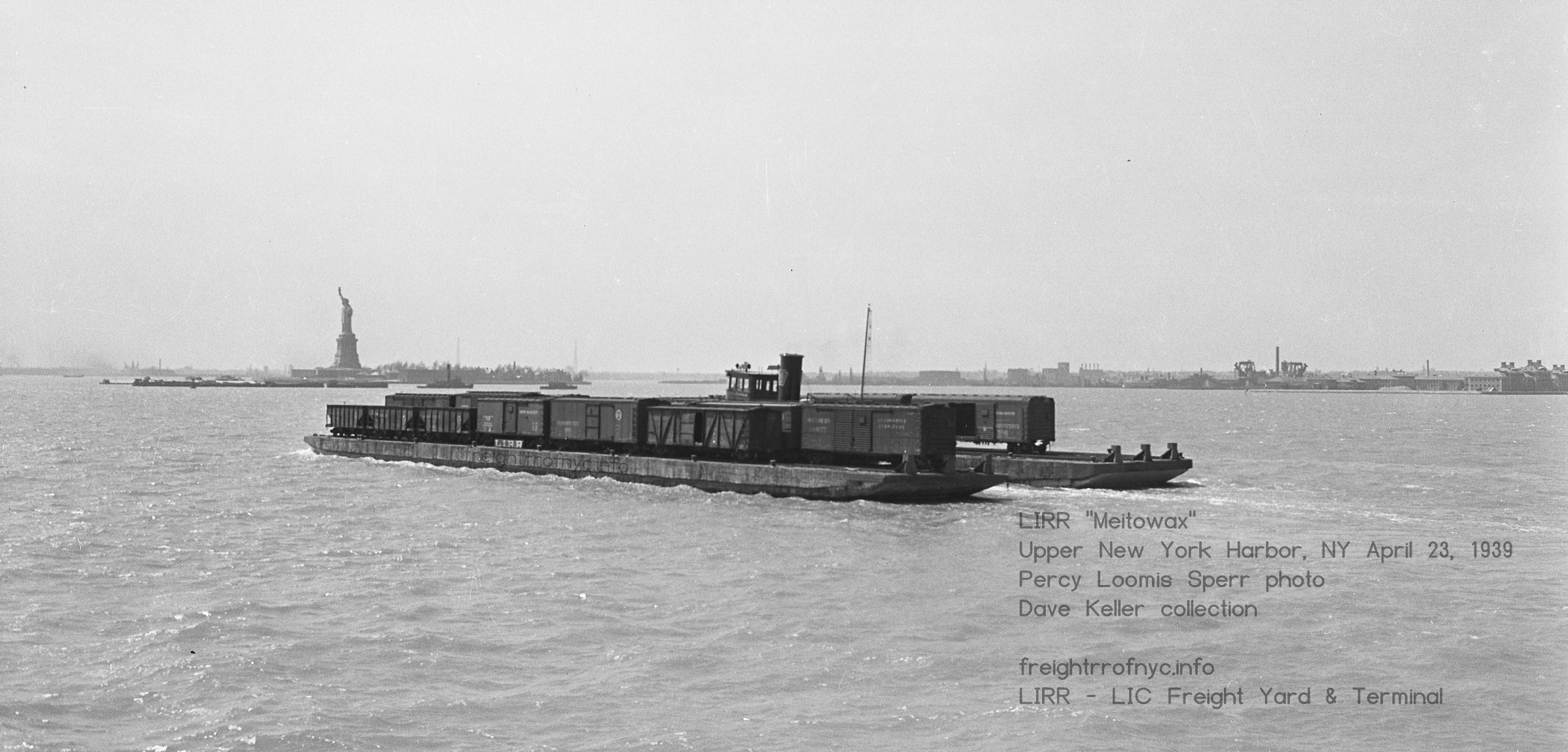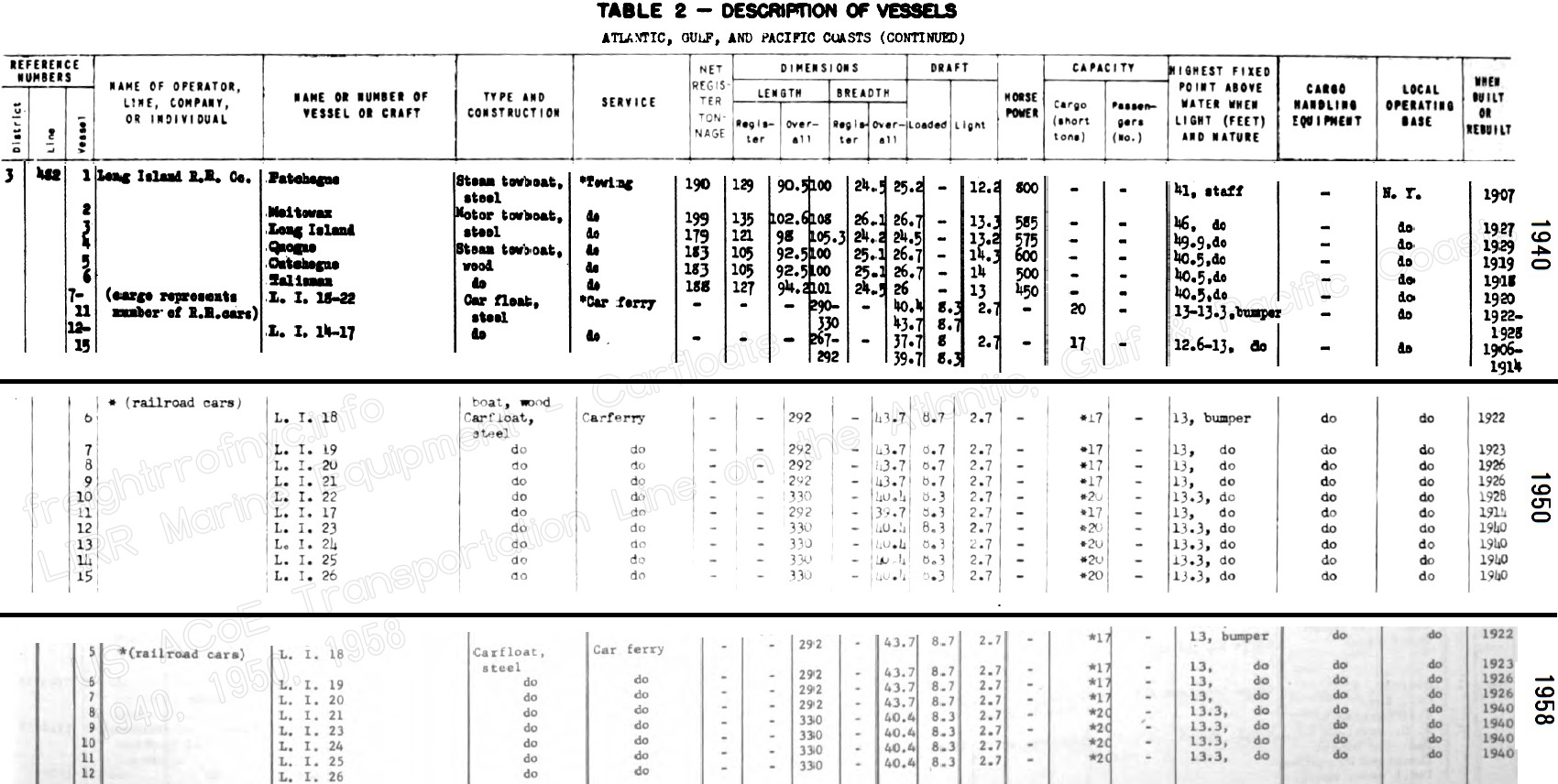INDUSTRIAL & TERMINAL RAILROADS &
RAIL-MARINE OPERATIONS
OF BROOKLYN, QUEENS, STATEN
ISLAND, BRONX &
MANHATTAN:
| LONG ISLAND RAIL ROAD LONG ISLAND CITY FREIGHT YARD & TERMINAL Long Island City / Hunter's Point, Queens |
 |
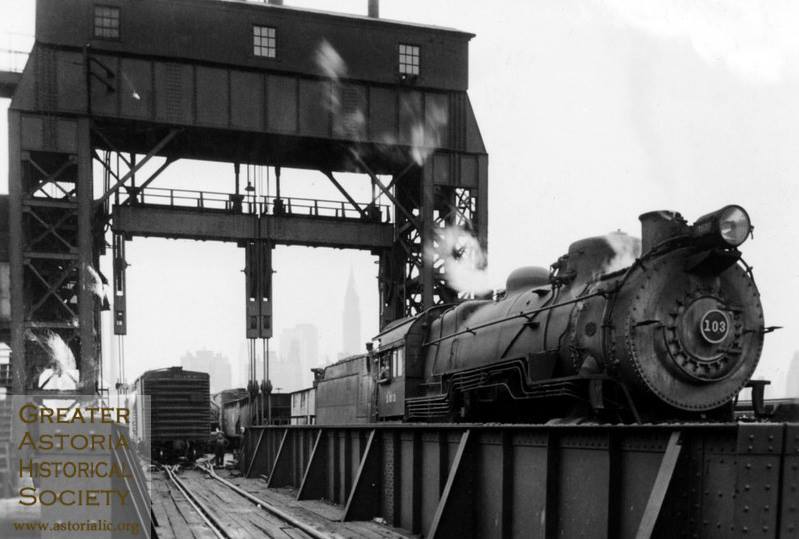
| Steve Lynch, Dave Keller A great deal of images on this webpage are reused from their website: TrainsAreFun |
as well as | Art Huneke for his historical collection and website: Arrt's Arrchives |
and
Conrad Milster for use of his tug images! |
||
|
updated: |
||
|
|
||
|
update summary: |
date: | chapter |
| Keller tugboat images added | 5/15/2024 | Marine Roster |
| maps added | 5/8/2024 | |
| page created | 5/5/2024 | |
| Overview | Property | Trackage | |
| . | |||
| Float & Transfer Bridges | Transfer 5 Bridge Collapse | Post Mortem | Marine Roster |
.
The only land connection for interchange traffic to / from the Long Island Rail Road, was with the South Brooklyn Railway at Parkville Junction. South Brooklyn Railway is the freight subsidiary of the New York City Transit Authority. Subway cars both incoming new cars and outgoing old cars for either rebuilding or scrapping were handled at this location, as well track materials: Ballast, rail. rail appliances (spikes, tie plates joiner bars, cross ties; etc. Parkville Junction was located on the Bay Ridge Branch, which was 3 1/4 miles east of 65th Street - Bay Ridge Yard, and 8 1/2 mile south and west of Fresh Pond Junction.
- Baltimore & Ohio
- Central RR of New Jersey
- Delaware, Lackawanna & Western
- Erie
- Lehigh Valley
- New York Central / West Shore
- New York, New Haven & Hartford
- New York, Susquehanna & Western
- Pennsylvania
 |
 |
| Long Island Rail Road Main Freight Routes - Post 1916 Secondaries and Industrial Branches not shown added 08 May 2024 |
Long Island Rail Road Freight Yards and Terminals in immediate vicinity of Long Island City, Queens, NY Minor Yards, Secondaries and Branches - 1955 excerpt from New York Harbor Terminals Map - 1955 edition Port of New York Authority collection of author added 08 May 2024 |
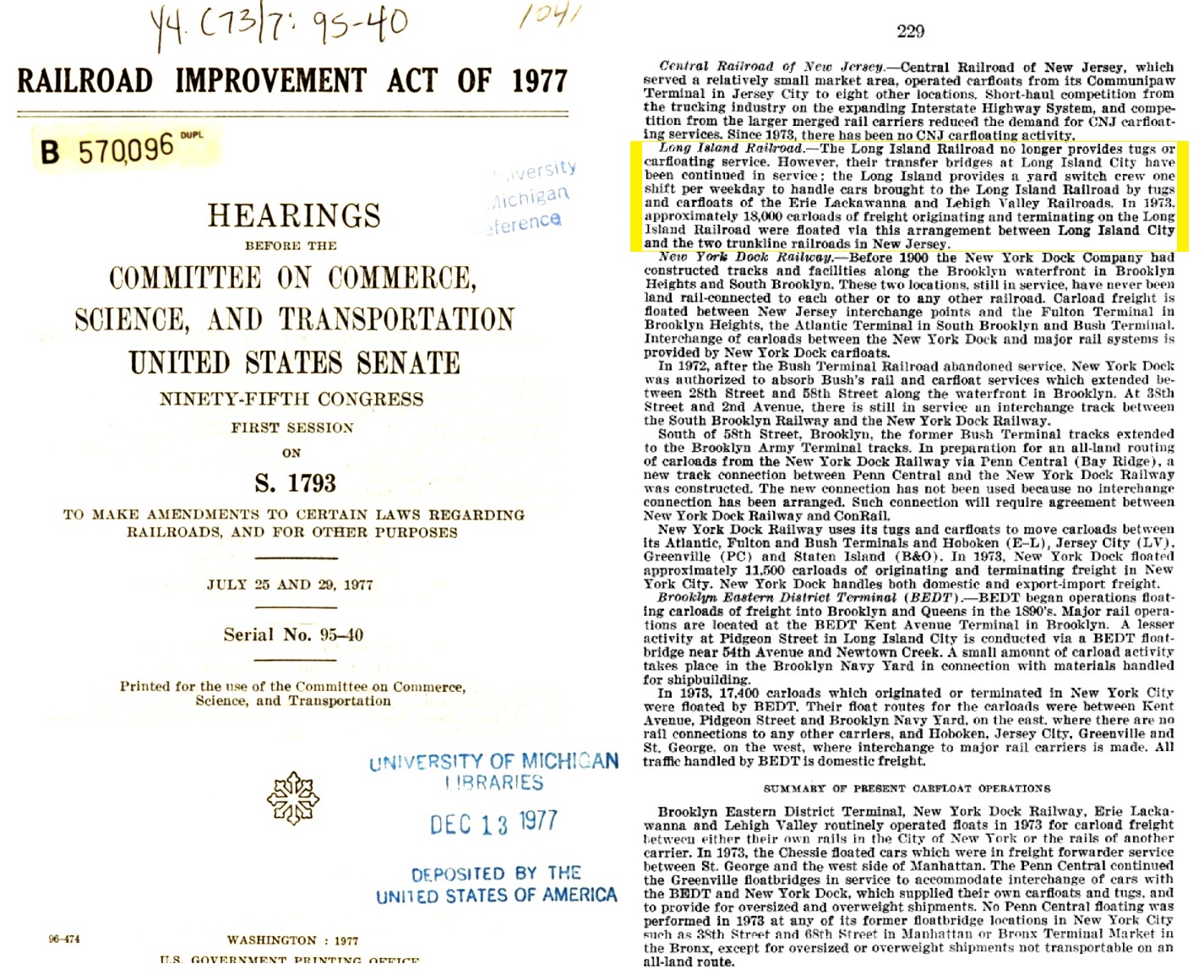
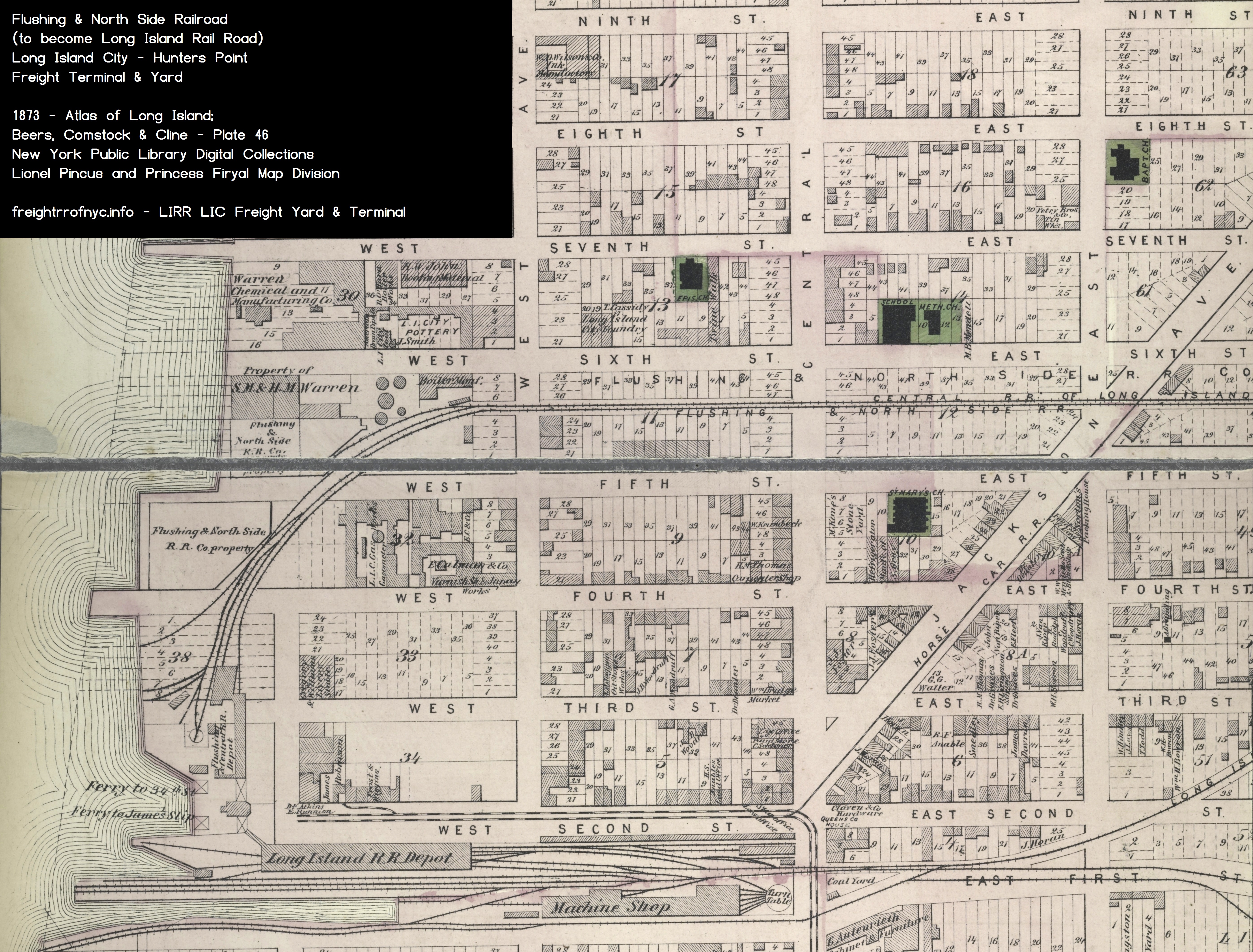
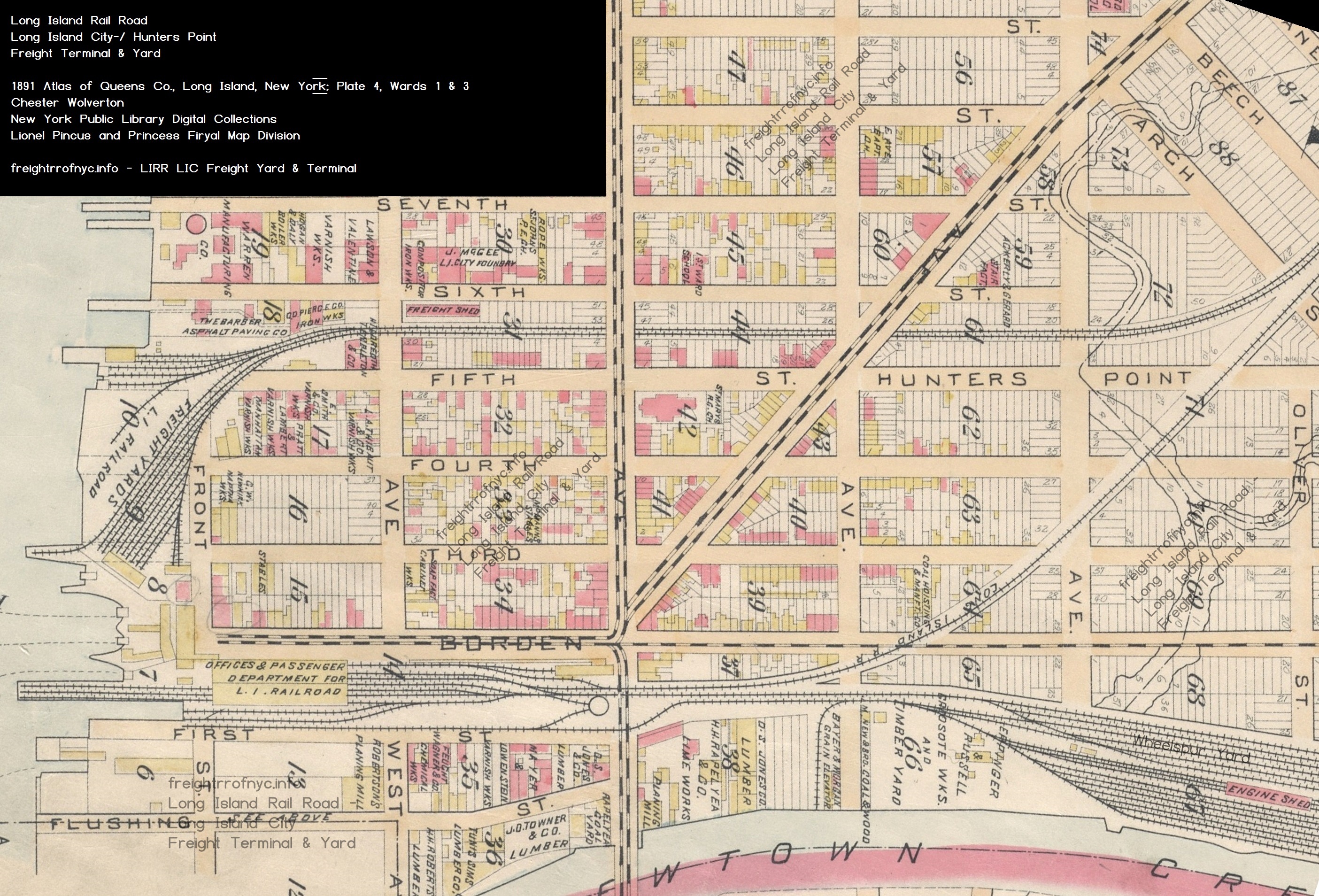
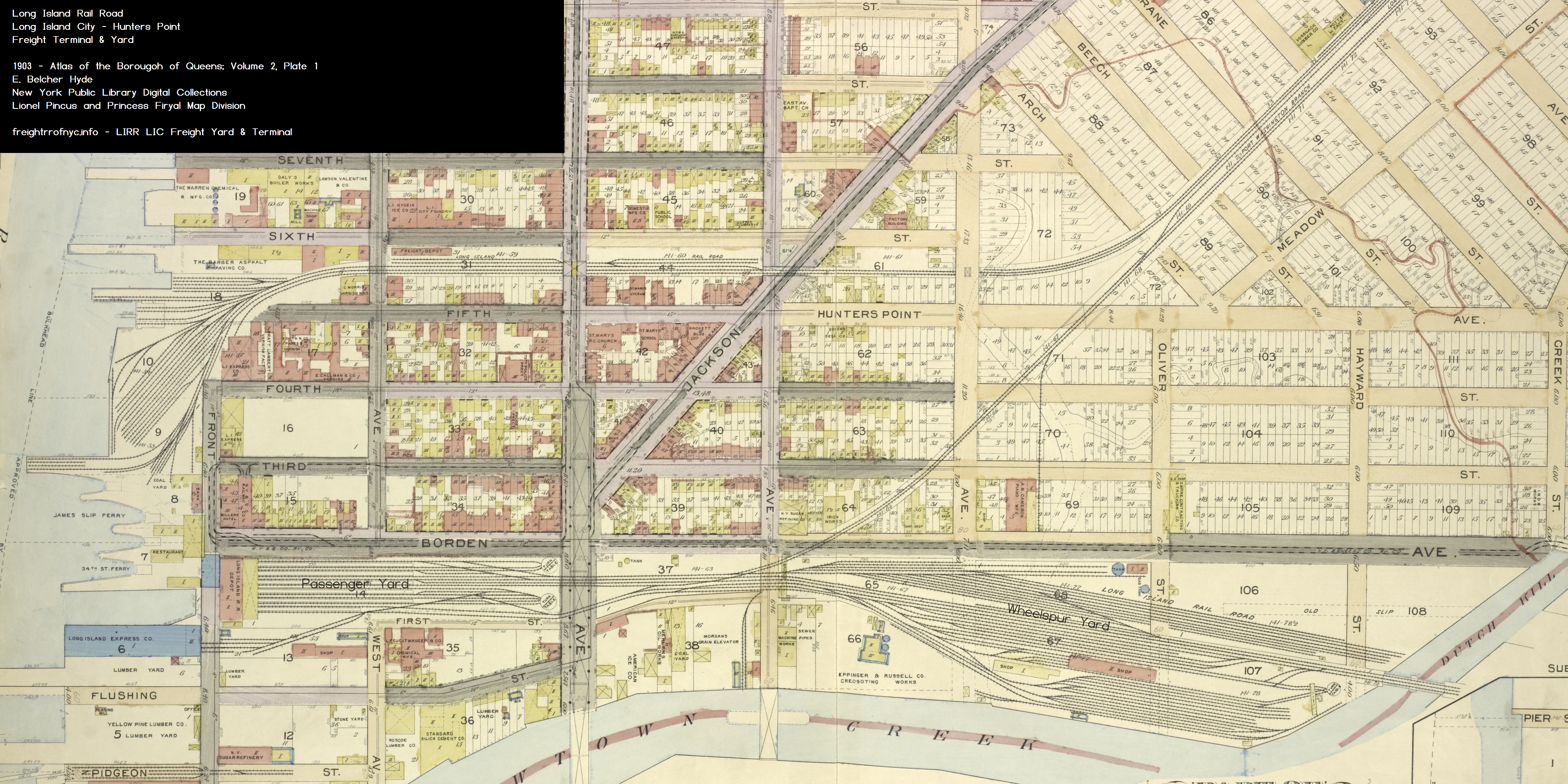
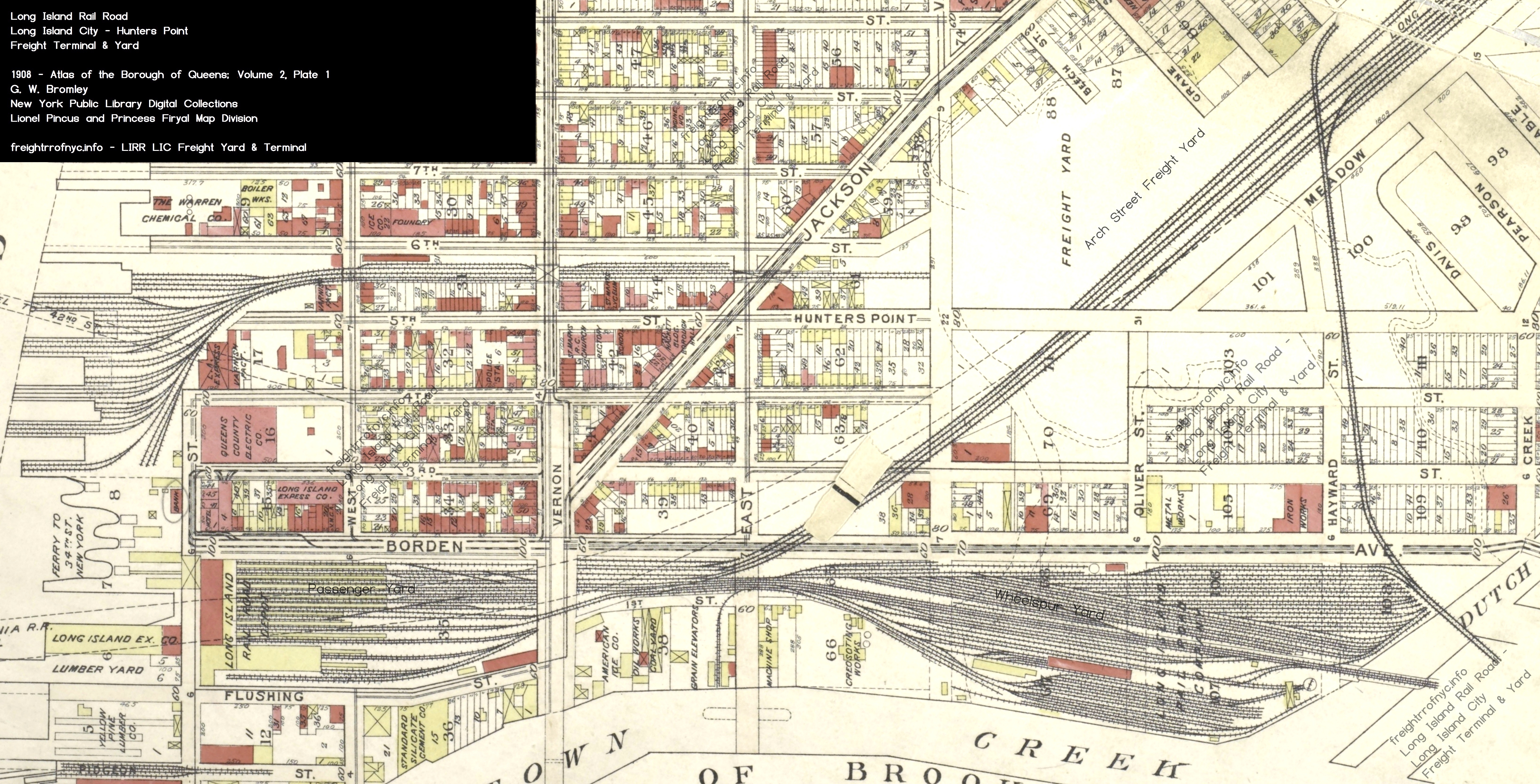

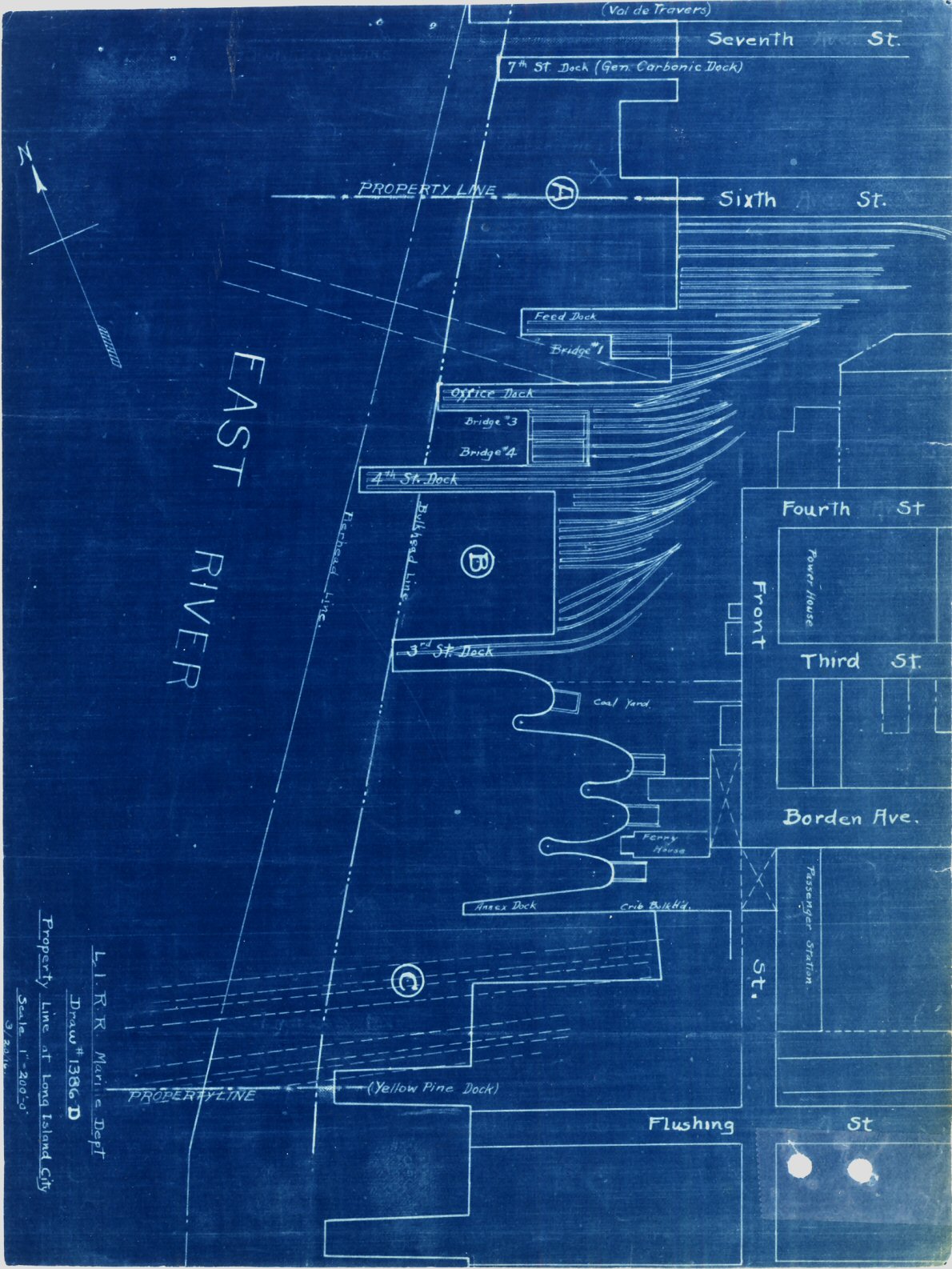



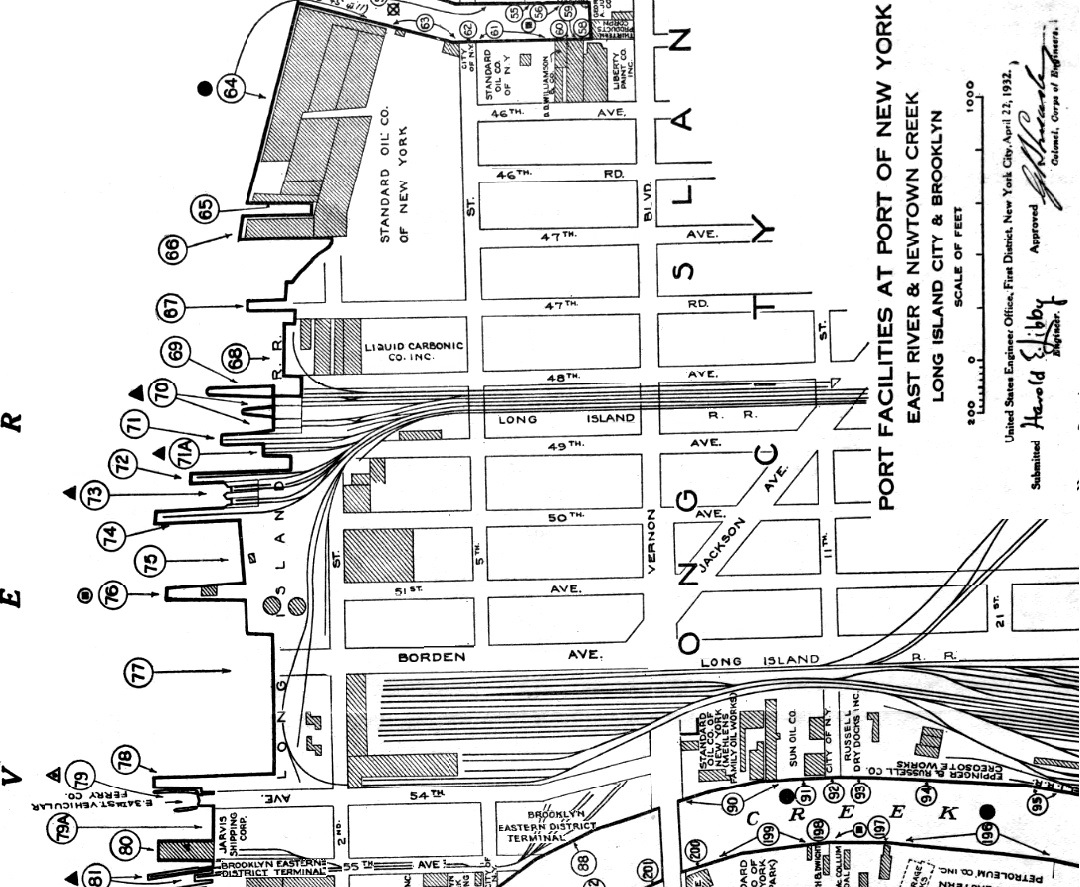
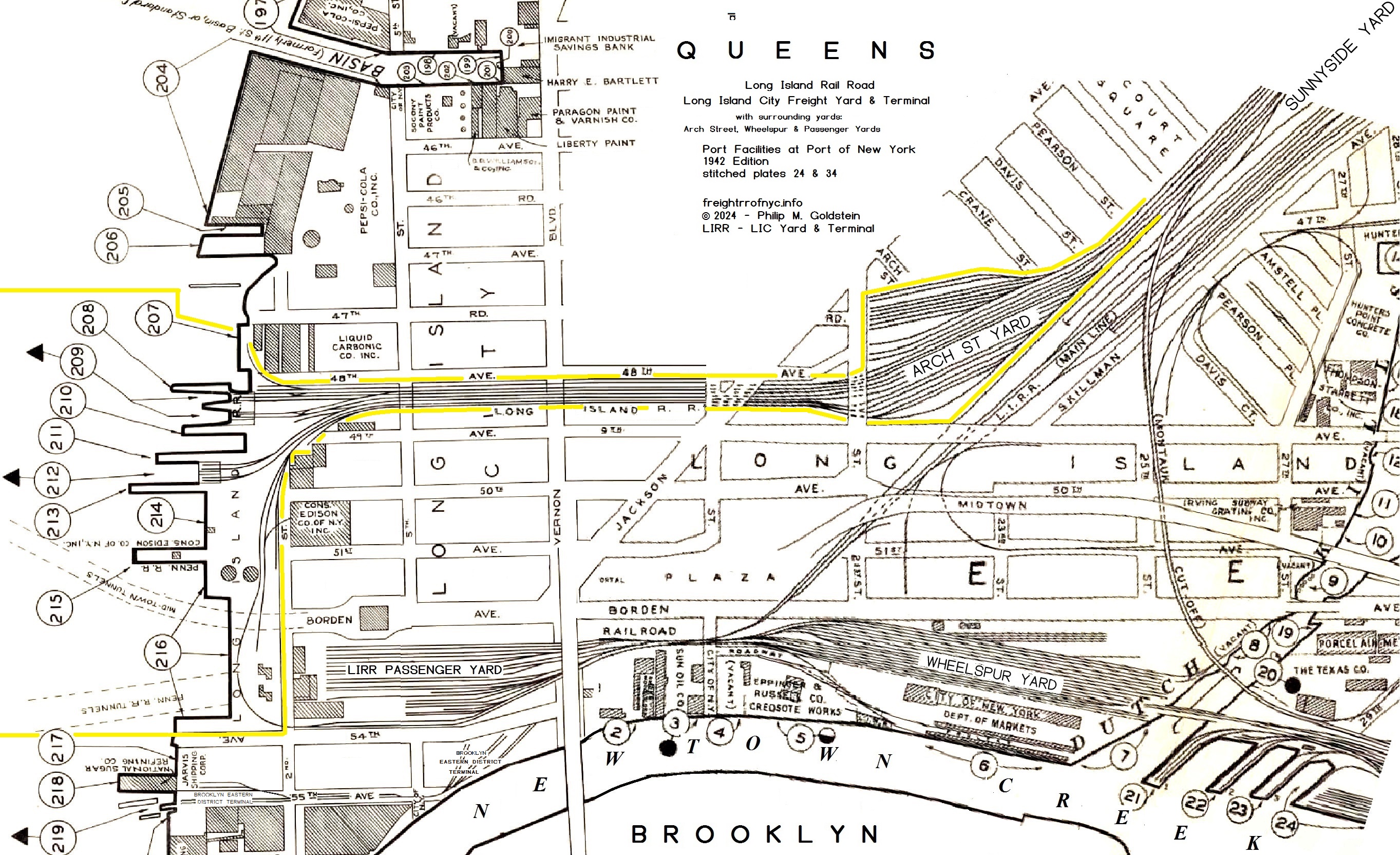
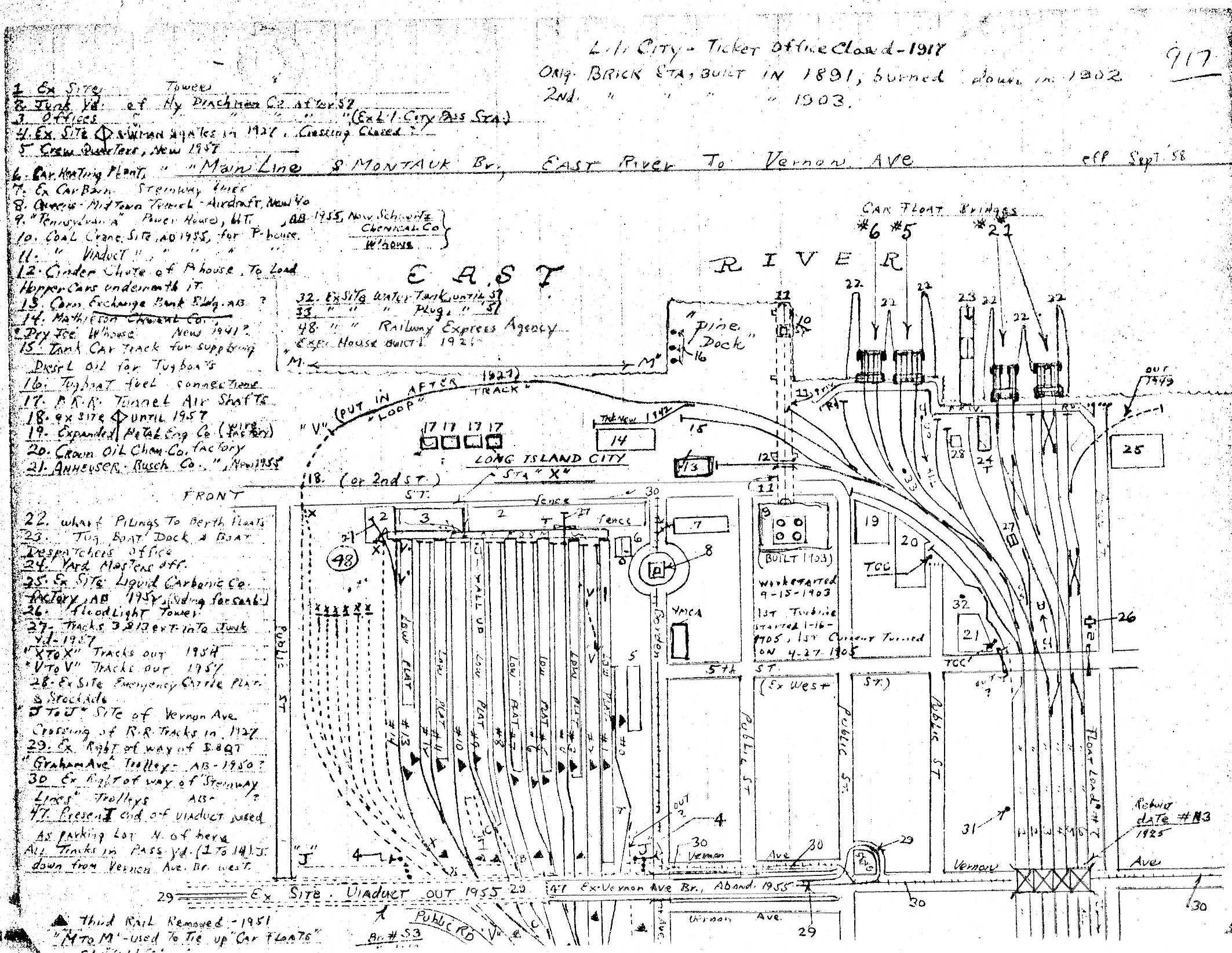

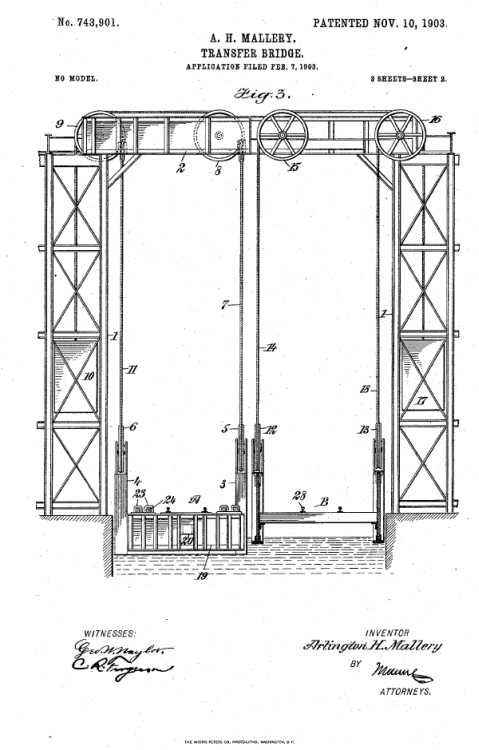
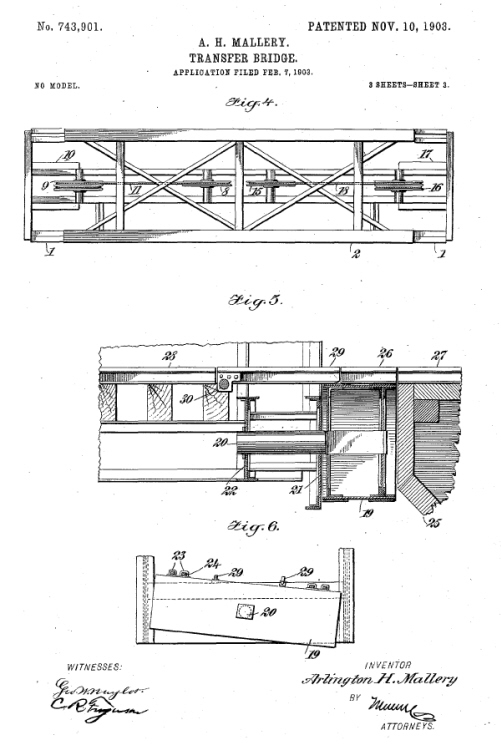
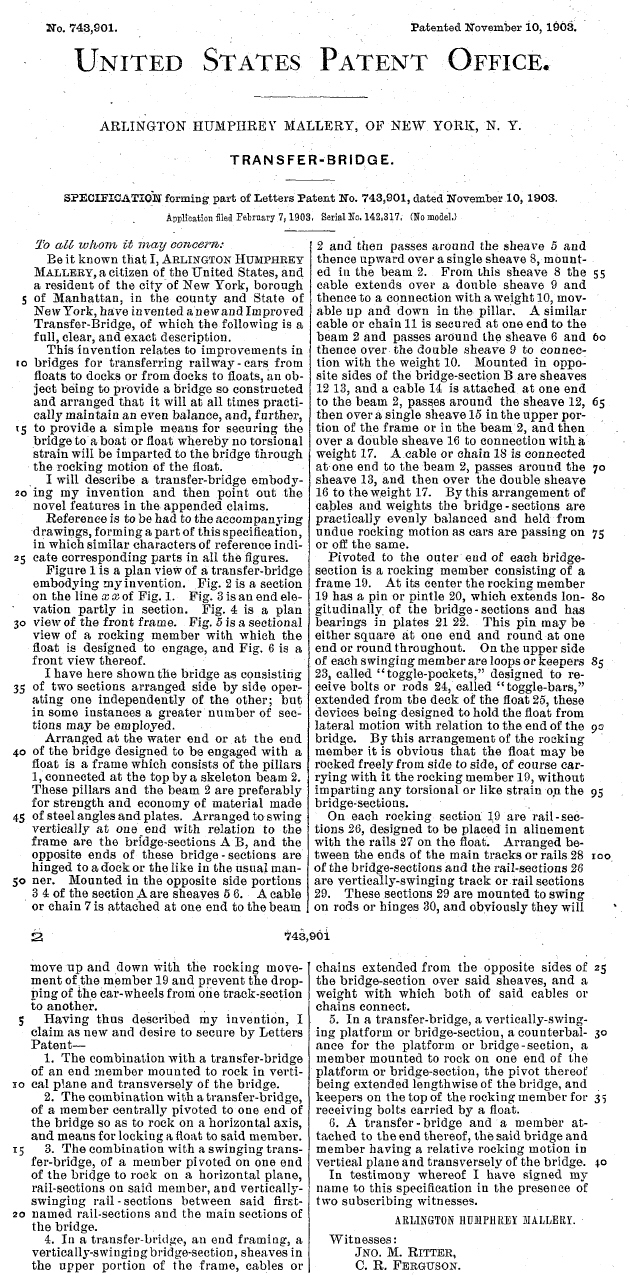
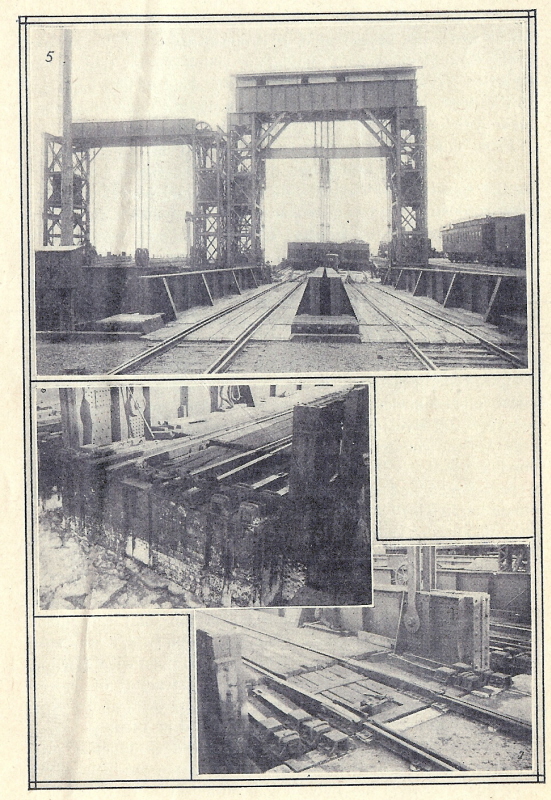
| 5: Shows one of the original Mallery (left)
and the French modified (right) bridges. 6: The swiveling head block (without carfloat) 7: The compromise rails and carfloat attachment (with carfloat). |
 |
 |

LIRR #103
wheel arrangement: 2-8-0 [Consolidation]
Baldwin Locomotive Works
c/n 40932
ex-PRR #7205
built November 1913
cylinders: 26" x 28"
driver diameter: 62"
to LIRR - July 1928

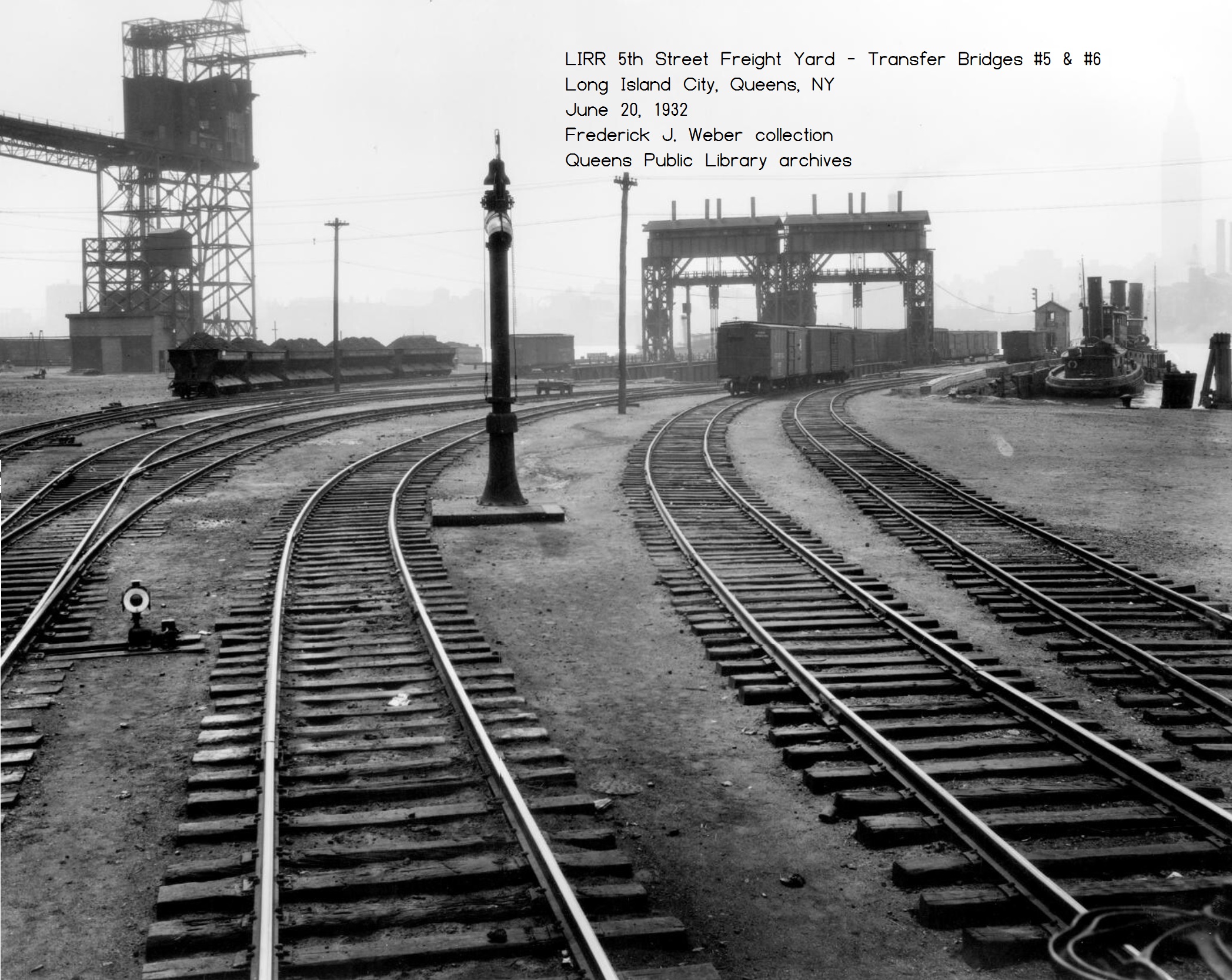
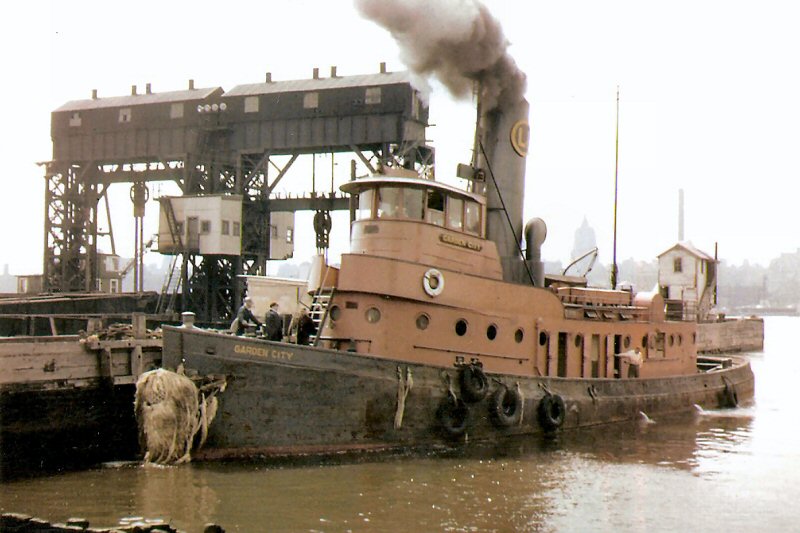
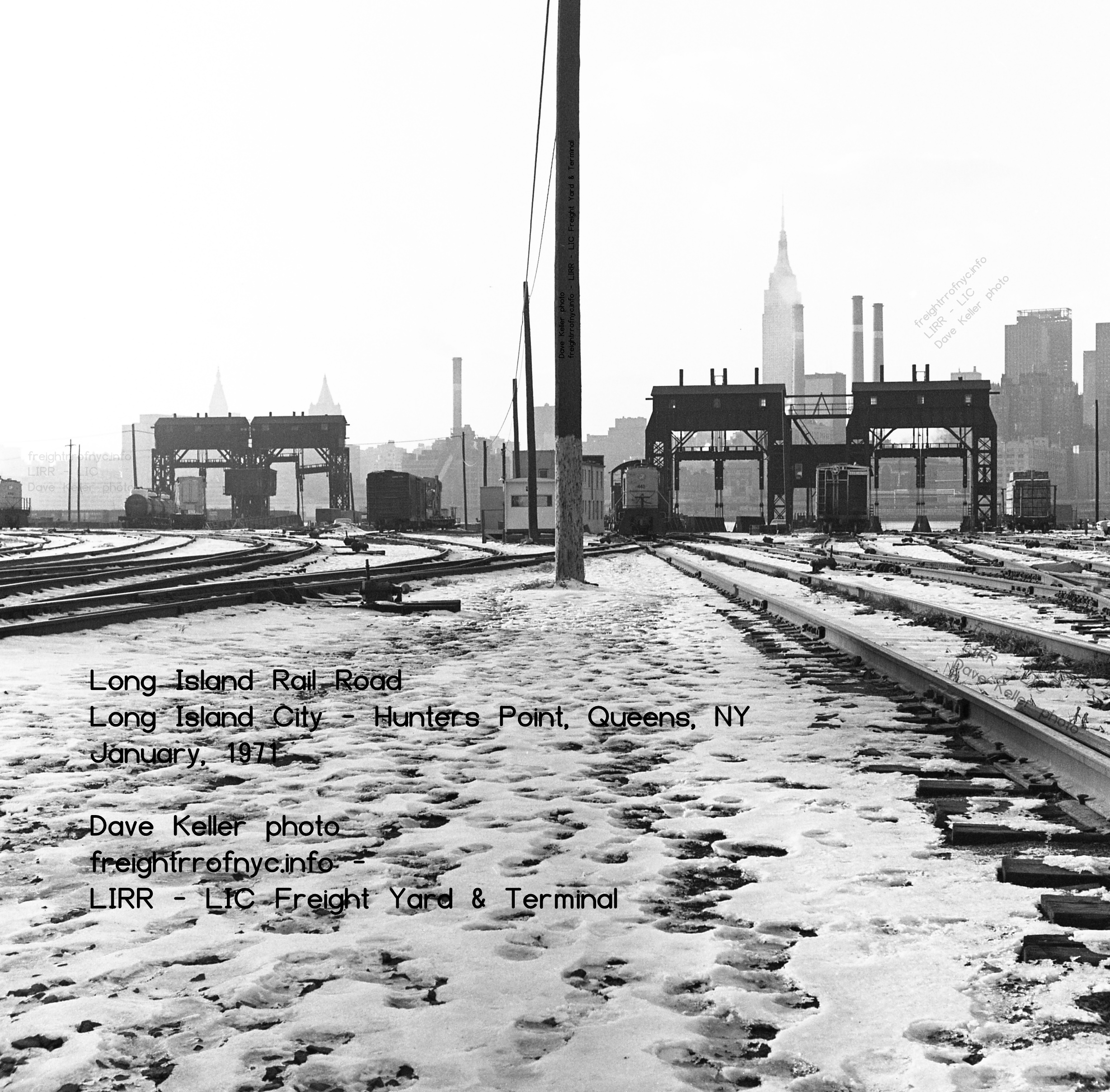
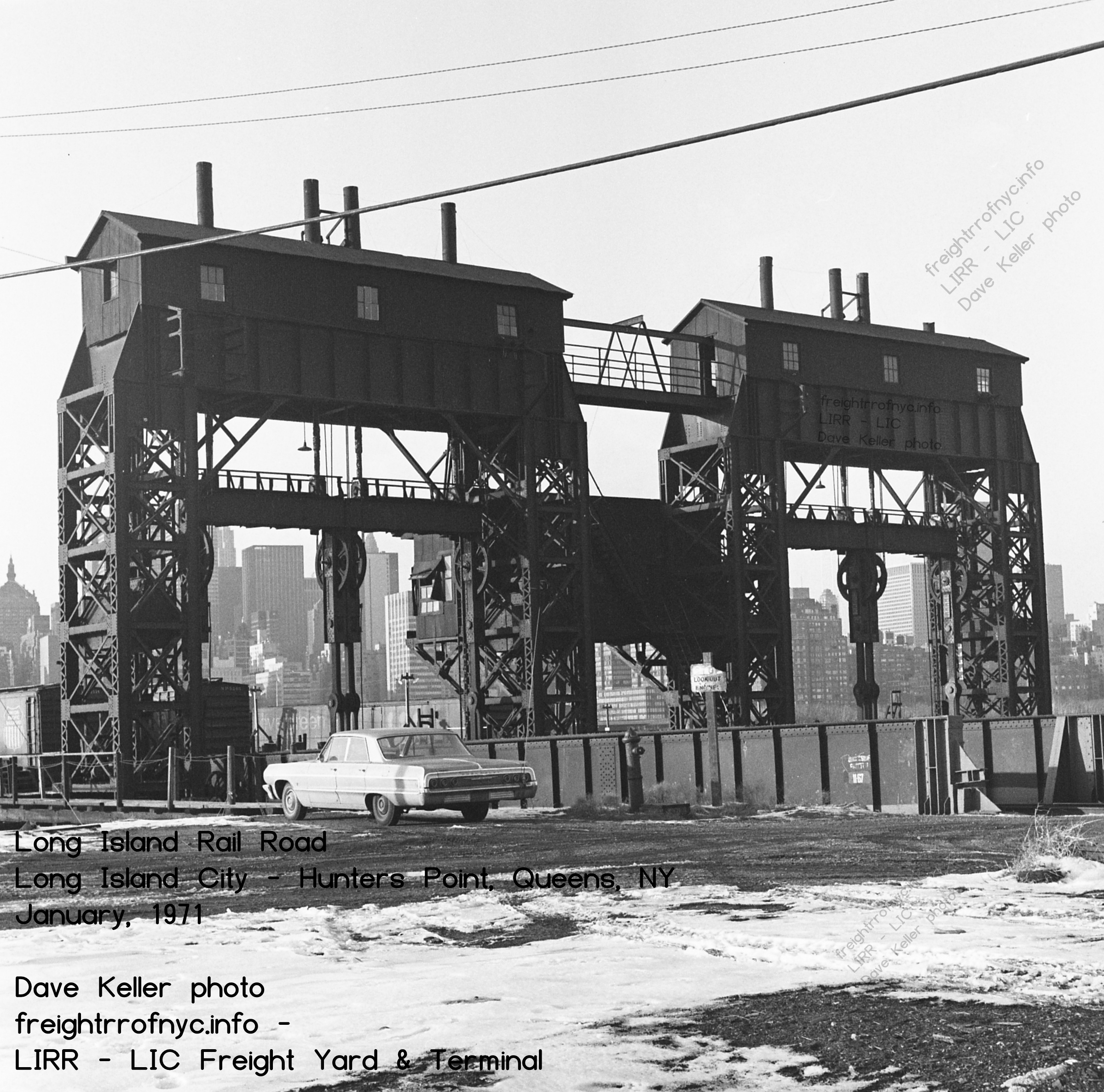
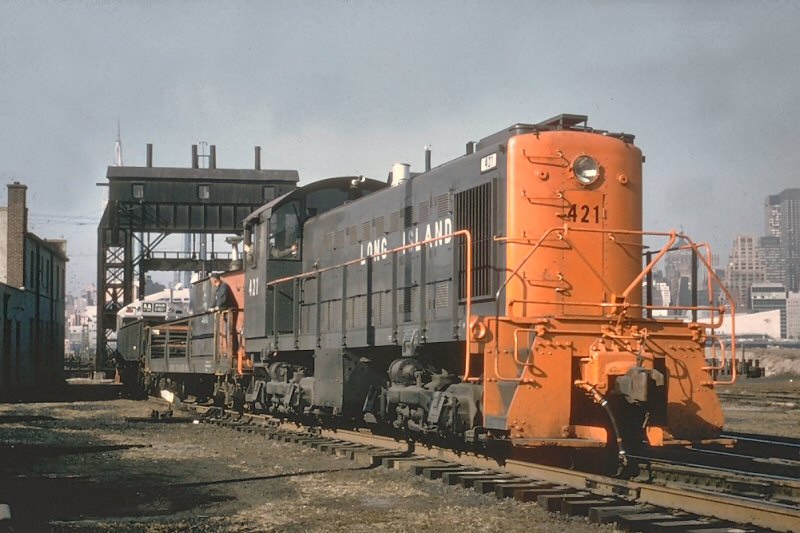
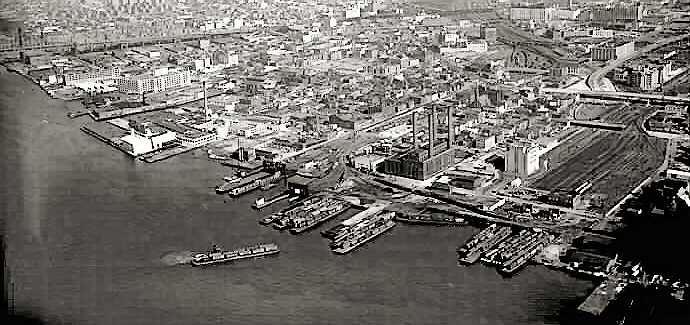
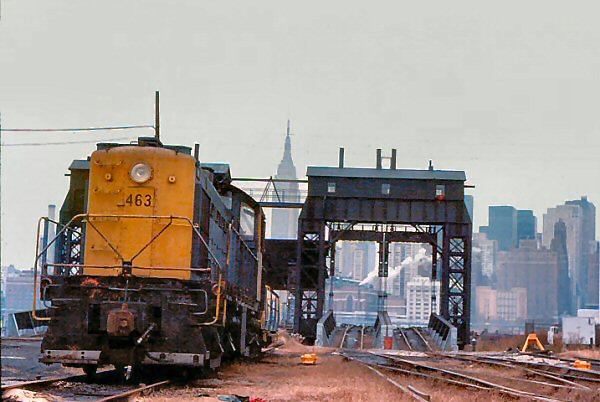
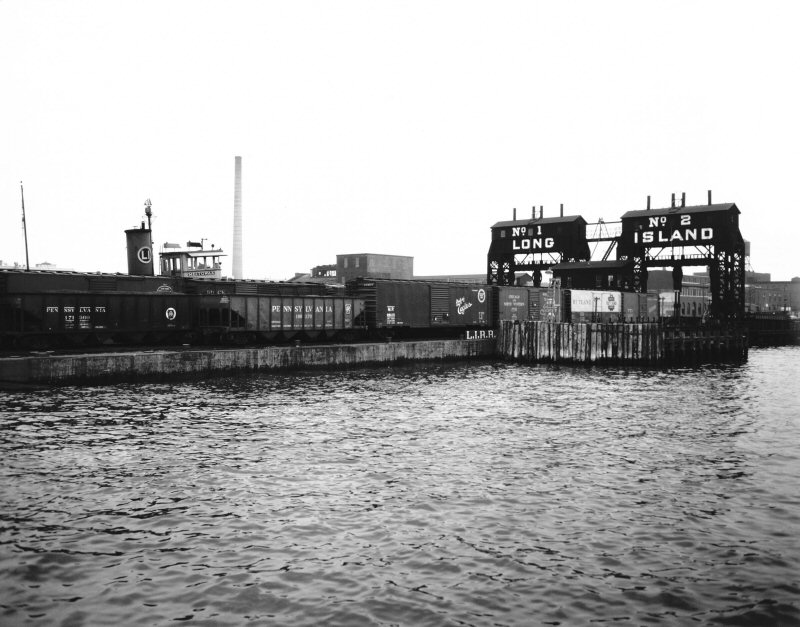

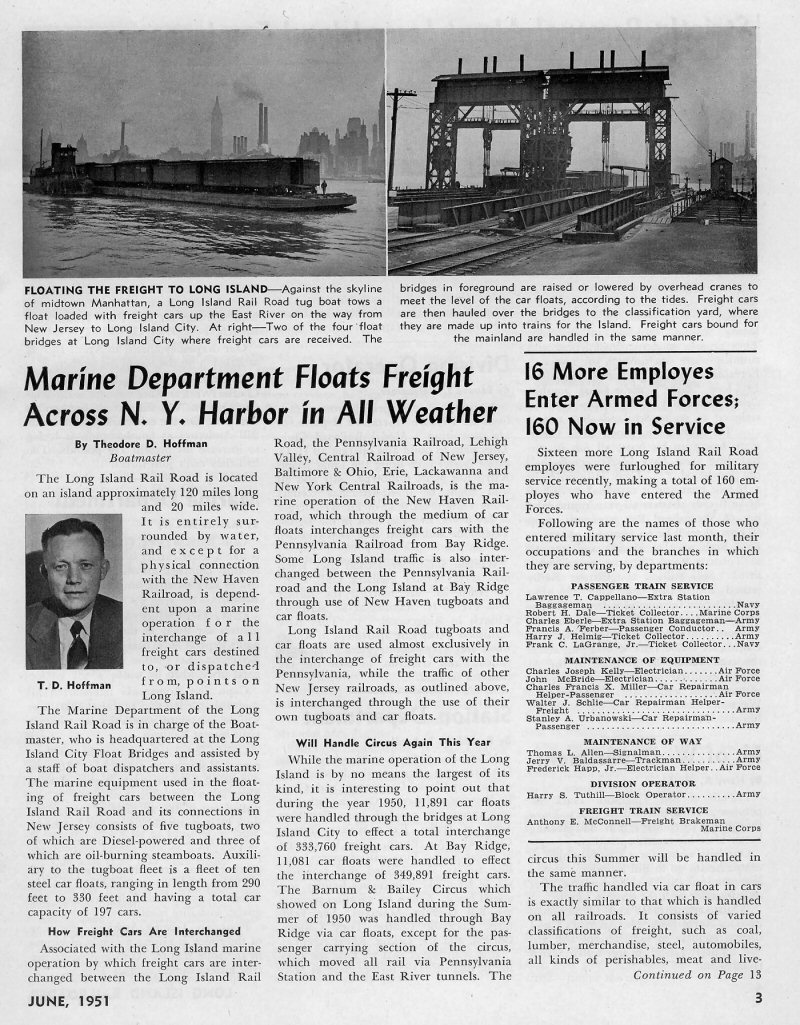
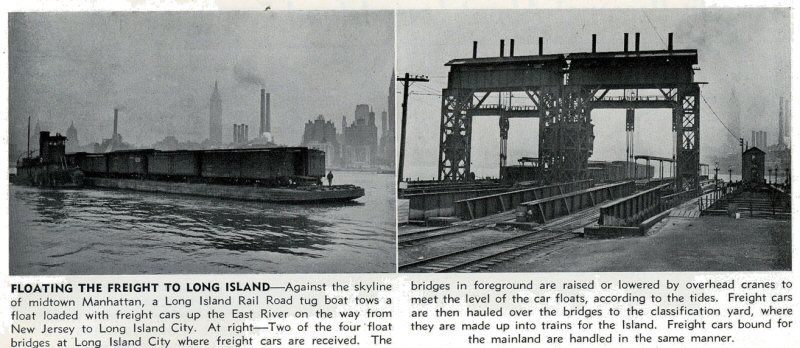
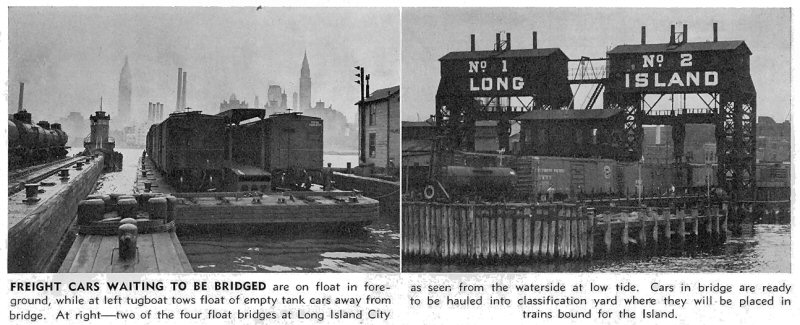



"It was still daylight when we had coupled up to the first car on the float. I then swung down off the float flat (reacher car) to get between the flat and the first car and bent down to hang the (air) hose when I heard this loud noise. I jumped up and looked around and saw the engine starting to tilt and the float under my feet start to move.
I didn't know that I could move so fast but when it all settled down, I was safely out of the way.
When the new Trainmaster on duty came to the scene, he asked me, "How fast were you going?" This was the standard question asked at all mishaps,
found on page one of the New Trainmaster's Handbook. "We were standin' still" was my reply. "Aww! Bullshit" came the bellow of the Trainmaster.
Words got a little testy until everyone understood that this was the boss.
To make a long story short, no one was injured, no one was disciplined, #5 Bridge was put out of service and Alco S1 #421 was cut up for scrap (there were new engines on order anyhow.)
It wasn't long afterward that all floating operations came to halt with the advent of Conrail."
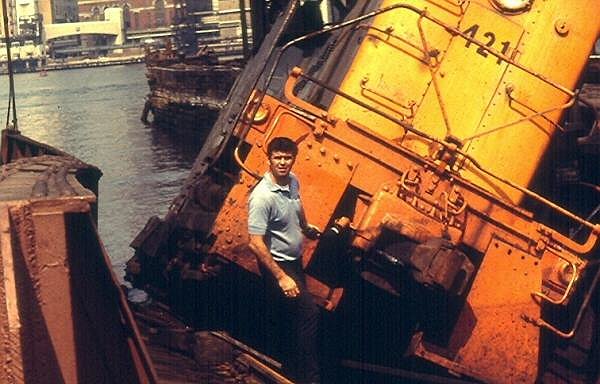 |
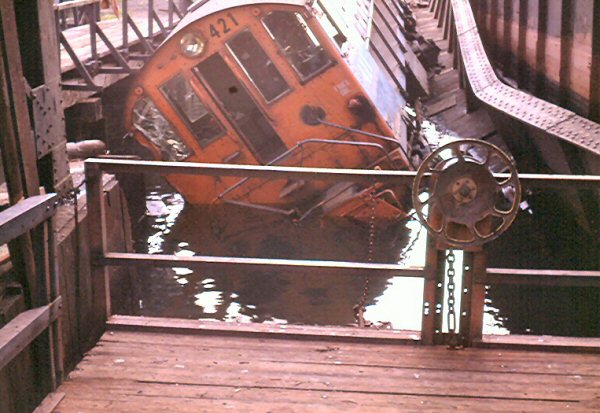 |
 |
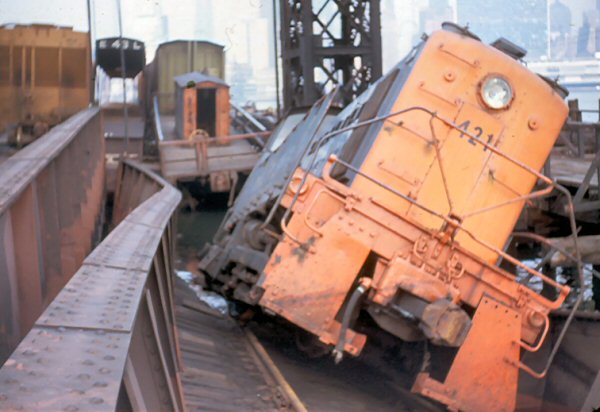 |
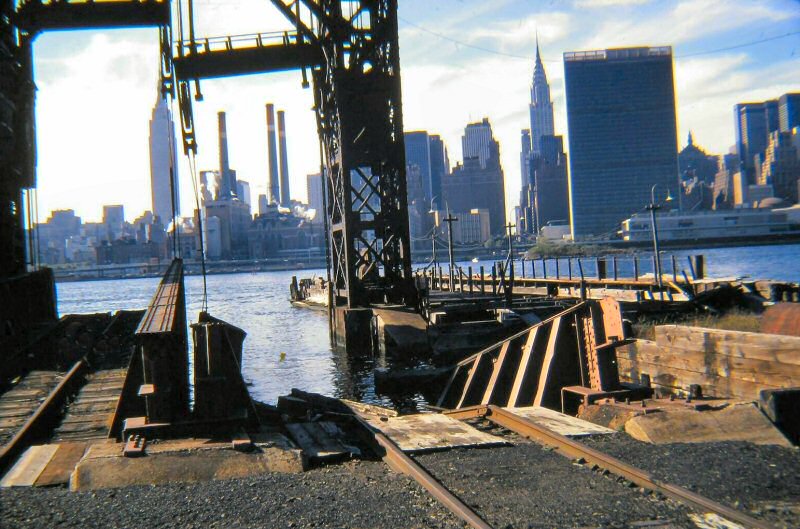 Transfer Bridge 5 - October 1972 courtesy of Steve Lynch / trainsarefun.com collection |
|
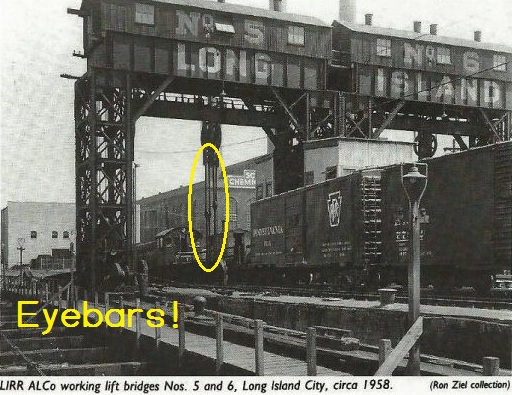 |
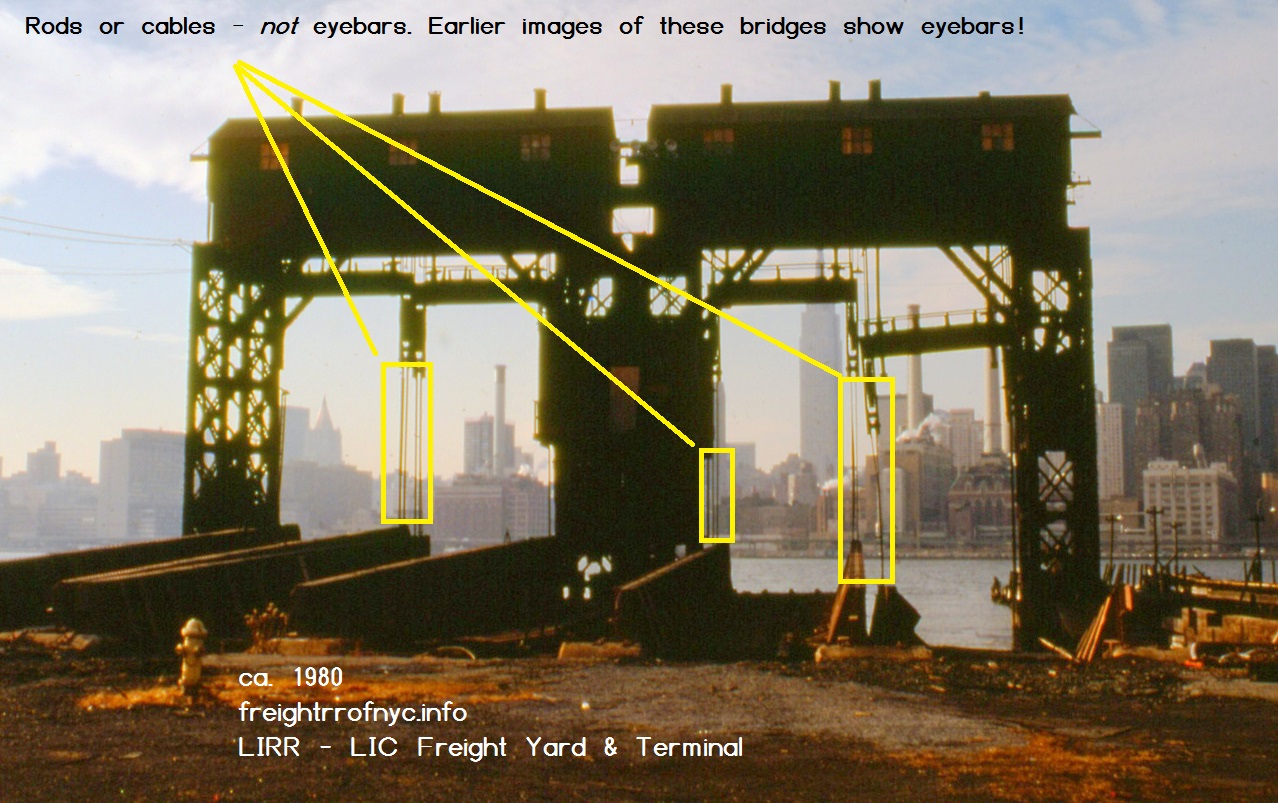 |
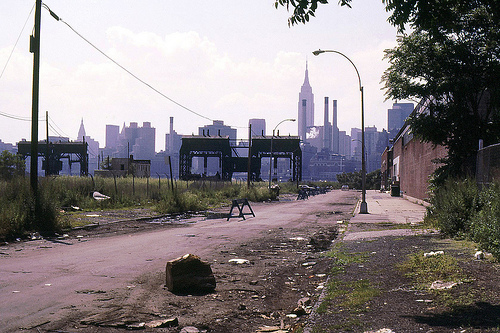


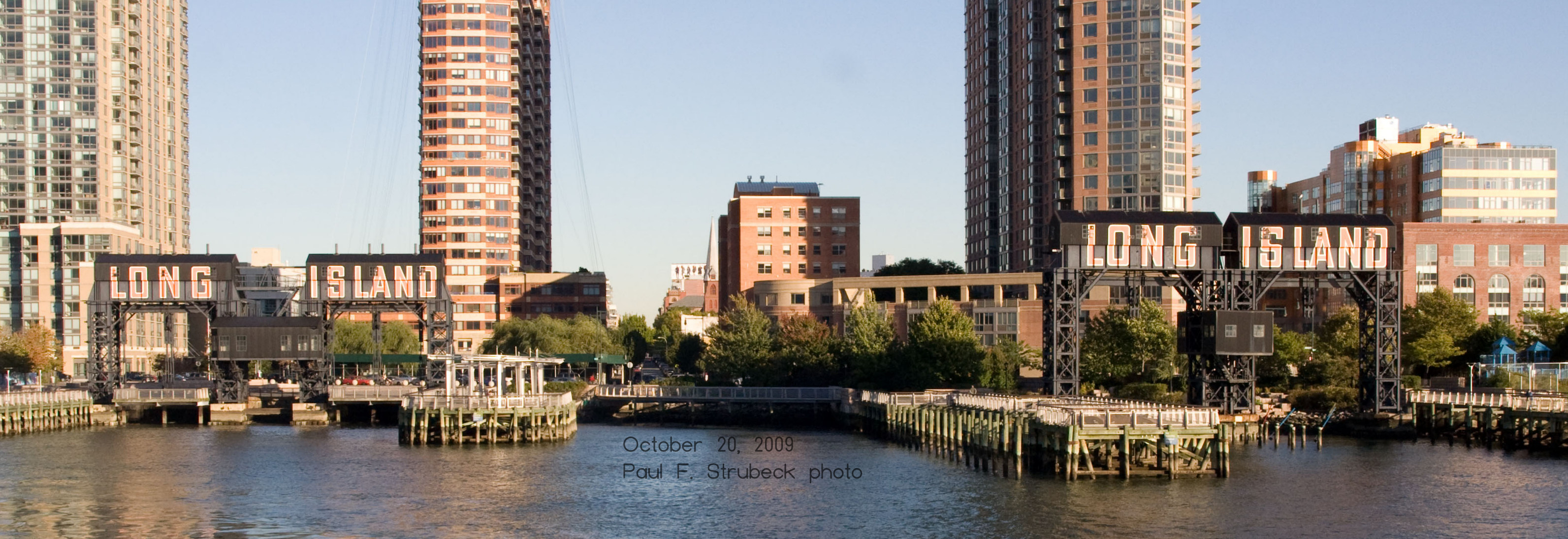
|
|
| .
. |
|
|
| .
. |
|
|
| .
. |
|
|
| .
. |
|
|
| .
. |
|
|
| .
. |
|
|
| .
. |
|
|
|
date built |
builder / |
official |
length |
beam |
draft |
|
gross |
net |
former owner |
|
|
||||||||||||
"Long Island" (first) |
|||||||||||||||||||||||
| 1885 | Brooklyn, NY | 140784 | 103 | 29 | 8.4 | 163 | 106 | steam | wood hull | ||||||||||||||
|
.
. |
|||||||||||||||||||||||
| "Gladiator" | |||||||||||||||||||||||
| 1888 | Baltimore Steamboat & Dry Dock Co Boston, MA |
86020 | 110.6 | 22 | 11.5 | 55 NHP | 167 | 83 | steam, compound 20" + 36" x 26" |
||||||||||||||
|
.
. |
|||||||||||||||||||||||
| "Wrestler" | |||||||||||||||||||||||
| 1889 | American Car & Foundry?? Boston, MA |
30869 | 115 | 25.5 | 13.2 | 500 | 198 | 99 | steam, compound 17" + 36" x 26" |
2 boilers, water tube, 150 psi | |||||||||||||
|
.
. |
|||||||||||||||||||||||
| "Montauk" | |||||||||||||||||||||||
| 1895 | Wilmington, DE | 96.6 | 22 | 10 | 500 | 121 | 51 | steam, compound 17" + 36 "x 26" |
wood hull 2 boilers, water tube, 150 psi |
||||||||||||||
|
|||||||||||||||||||||||
| "Syosset" | |||||||||||||||||||||||
| 1899 | Neafie & Levy Philadelphia, PA |
116895 | 102.6 | 23 | 10.5 | 700 71 NHP |
20" + 40" x 28" |
steel hull 2 boilers, water tube, 150 psi |
|||||||||||||||
|
|||||||||||||||||||||||
|
"Patchogue" |
|||||||||||||||||||||||
| 1907 (1907 - 1959) |
Camden, NJ | 204384 | 90.5 | 25.4 | 11.6 | 800 | 190 | 129 | steam, compound 18" + 38"x28" |
steel hull 2 boilers, water tube, 150 psi |
|||||||||||||
|
.
. |
|||||||||||||||||||||||
| "Cutchogue" | |||||||||||||||||||||||
| 1918 | Wilmington, DE | 217845 | 98.5 | 25.1 | 15.1 | 600 | 184 | 105 | steam, compound 17" + 36 "x 26" |
wood hull boilers, water tube, 150 psi |
|||||||||||||
|
.
. |
|||||||||||||||||||||||
|
"Quogue"
|
|||||||||||||||||||||||
| 1919 | Wilmington, DE | 219419 | 92.5 | 25.1 | 15.7 | 600 | 184 | 105 | steam, compound 17" + 36 "x 26" |
wood hull boilers, water tube, 150 psi |
|||||||||||||
|
.
. |
|||||||||||||||||||||||
| "Talisman" | |||||||||||||||||||||||
| 1920 <1926> |
Valley Iron Works Camden, NJ |
22000 | 94.2 | 24.5 | 13 | 450 61 NHP |
188 | 127 | steam | steam, compound 18" + 36 "x 26" |
steel hull 2 boilers, water tube, 200 psi |
||||||||||||
|
.
. |
|||||||||||||||||||||||
| "Meitowax" | |||||||||||||||||||||||
| 1926 - 1963 | Staten Island Shipbuilding Staten Island, NY or Jakobson Ship Yard ? Oyster Bay, NY |
226219 | 96' | 26 | 13.3 | 800 (680?) |
199 | 135 | diesel - electric (2) Ingersoll Rand 6 cylinder 4 cycle single action vertical, 13" bore x 19" stroke Price Rathbone solid fuel inj, water cooled |
steel hull sold 1963 to L. W. Bicaise, South Carolina' sunk in transit 10/22/1963 with all four hands |
|||||||||||||
|
.
. |
|||||||||||||||||||||||
|
"Number 1" |
|||||||||||||||||||||||
| 1930 - 1963 | Pusey & Jones Wilmington, DE |
229322 / 402 | 104.6' | 24' | 13.6' | 750 (550?) |
186 | 129 | diesel-electric (2) Winton 6-121 |
steel screw steel hull renamed "Long Island" unknown date Sold 1965 to Port Everglades Towing, of Ft. Lauderdale, FL; renamed "Battler", later renamed "Sandra St Philip" Repowered, then completely rebuilt; in service until early 1990's. Final disposition unknown |
|||||||||||||
| . |
|||||||||||||||||||||||
|
.
. |
|||||||||||||||||||||||
|
"Garden City" |
|||||||||||||||||||||||
| 1941-1963 | Pusey & Jones Wilmington, DE |
240341 | 101.2 | 25.2 | 13 | 800 | 218 | 148 | steam, uniflow 22" + 22 " x 24" |
steel hull 1 boiler, water tube, 280 psi sold to McAllister Towing, became the "Wm. H. McAllister" scrapped 2003, in VA. |
|||||||||||||
